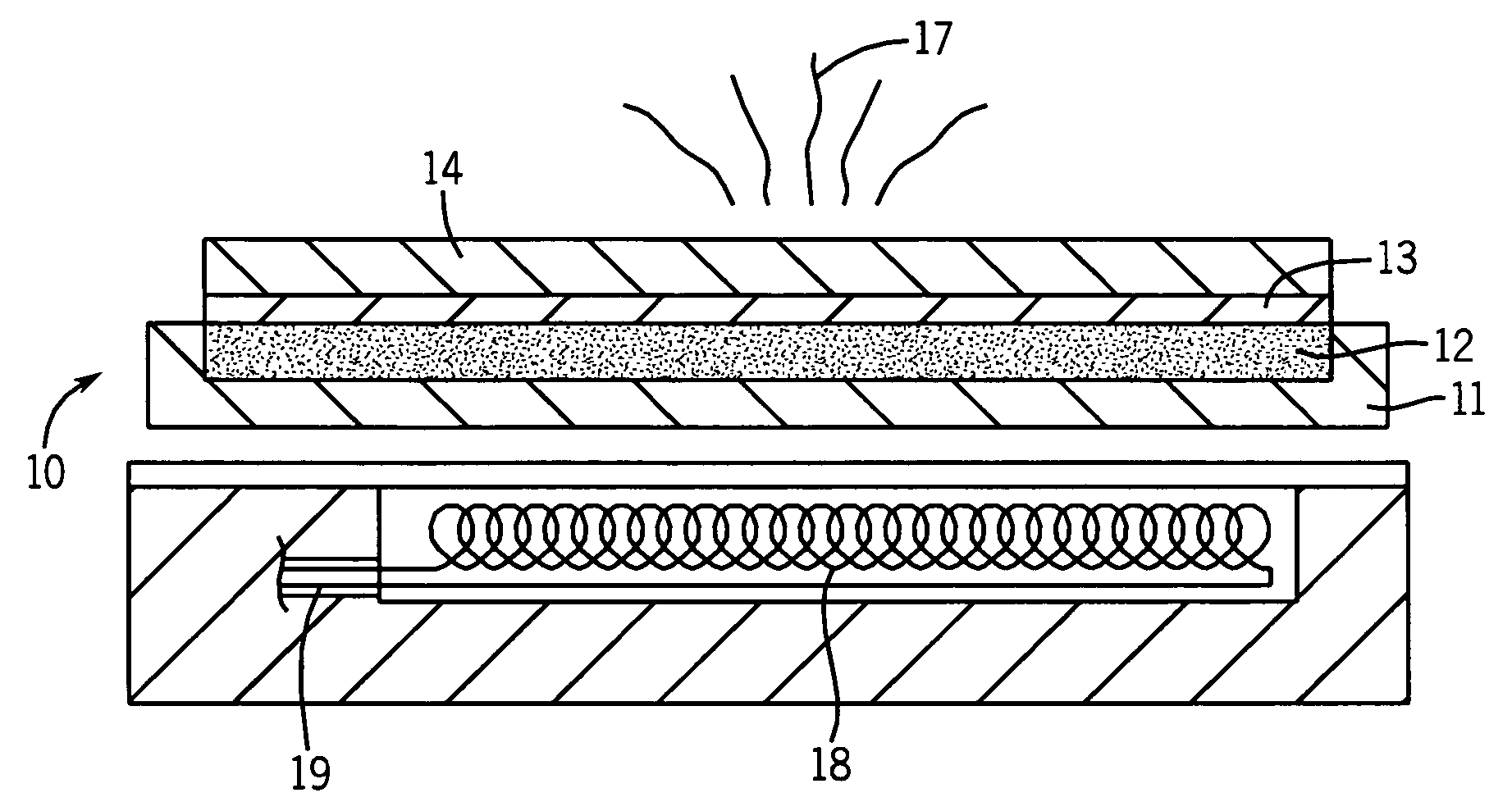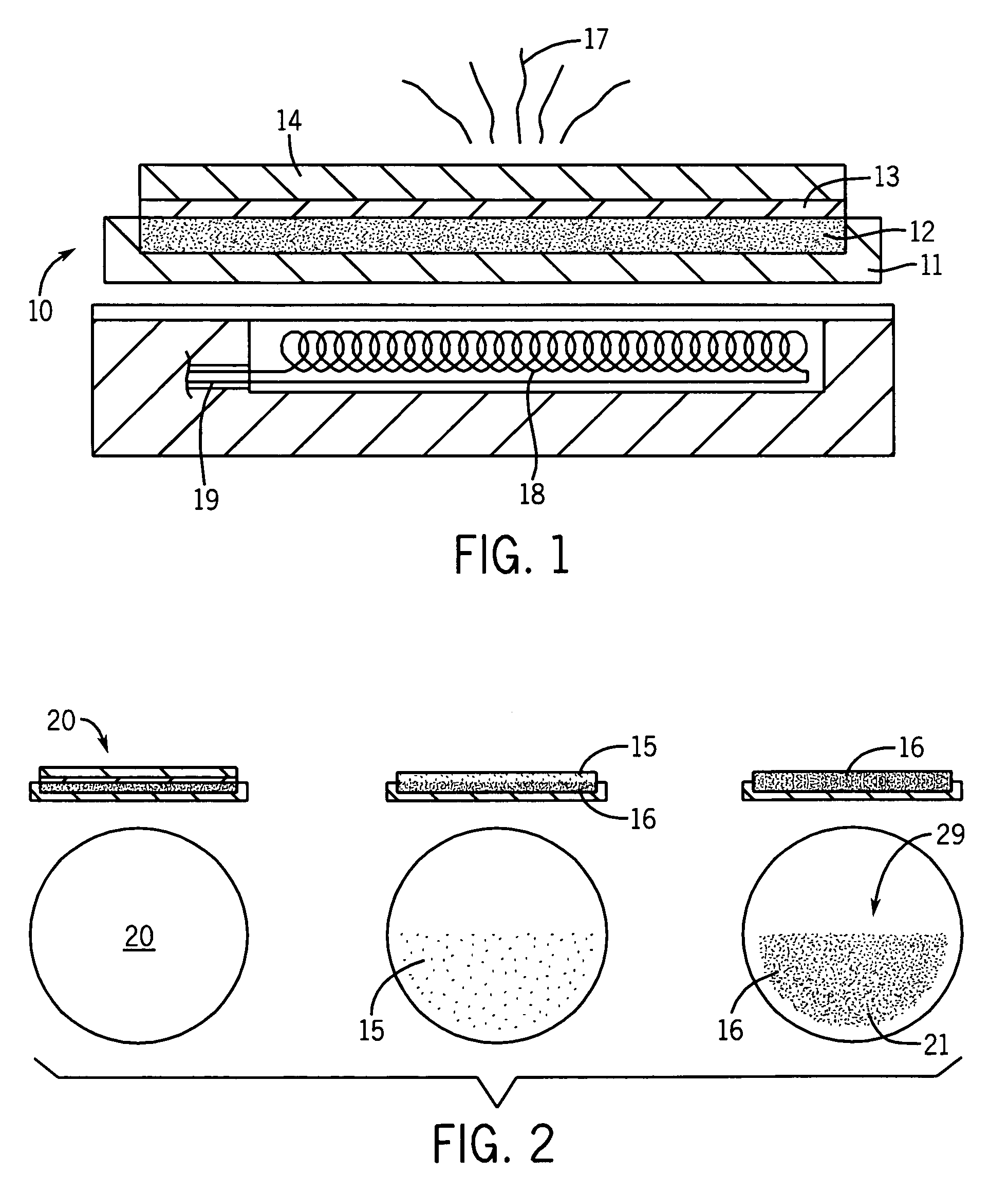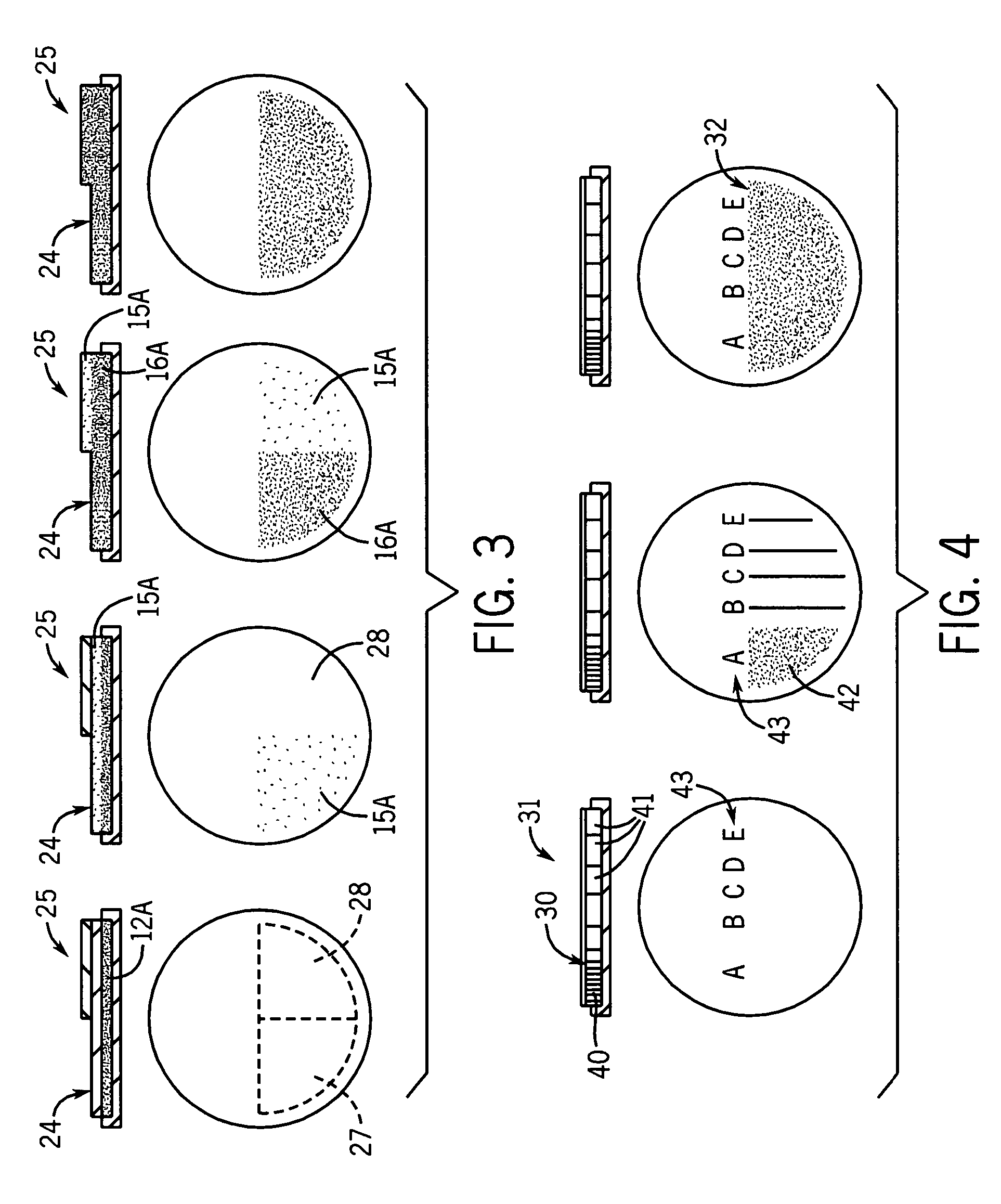Heated volatile dispensing device with dye-based use-up indicator
a technology of dye-based use-up indicator and heating volatile, which is applied in the field of indicators, can solve the problems of affecting the heating performance of the heater, affecting the heating effect of the heater, and changing the appearance of the substrate, etc., and achieves the effect of small pores and high density polyethylen
- Summary
- Abstract
- Description
- Claims
- Application Information
AI Technical Summary
Benefits of technology
Problems solved by technology
Method used
Image
Examples
Embodiment Construction
[0043]Referring first to FIGS. 1 and 2, there is shown an air treatment device 10 which has a substrate with a base 11, a cavity 12 filled with a mix of multiple migrate able dyes 15 / 16, a meltable wax covering 13, and a porous substrate layer 14. The base 11 is semi-circular cup-shaped, heat resistant, and impermeable to the dyes. The dye cavity 12 is similarly semi-circular and aligned with both the base 11 and the semi-circular viewing position 29 at the top of the substrate layer 14. The substrate layer 14 is circular in top view. The covering 13 is preferably in the form of a semi-circular top.
[0044]The porous substrate layer 14 is preferably pre-impregnated with an insect control repellent 17 which is dispensed to the air as the substrate layer 14 is heated. An electrical heater 18 heats the substrate layer 14 and is powered by a conventional electrical connection 19. When the heater 18 is turned on, one of the effects is to melt the wax of the covering 13. Upon engaging the h...
PUM
 Login to View More
Login to View More Abstract
Description
Claims
Application Information
 Login to View More
Login to View More - R&D
- Intellectual Property
- Life Sciences
- Materials
- Tech Scout
- Unparalleled Data Quality
- Higher Quality Content
- 60% Fewer Hallucinations
Browse by: Latest US Patents, China's latest patents, Technical Efficacy Thesaurus, Application Domain, Technology Topic, Popular Technical Reports.
© 2025 PatSnap. All rights reserved.Legal|Privacy policy|Modern Slavery Act Transparency Statement|Sitemap|About US| Contact US: help@patsnap.com



